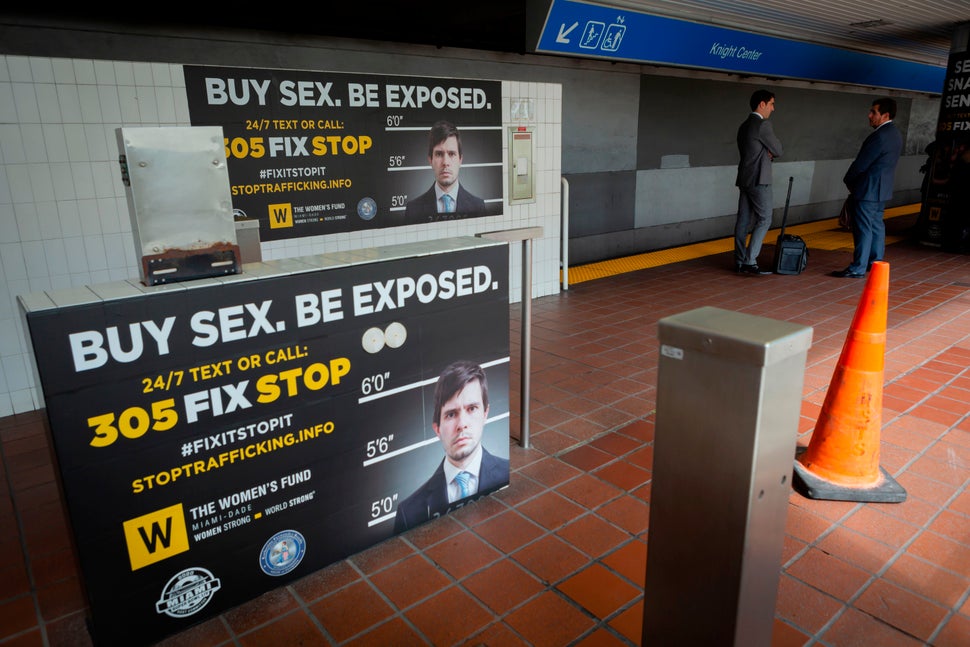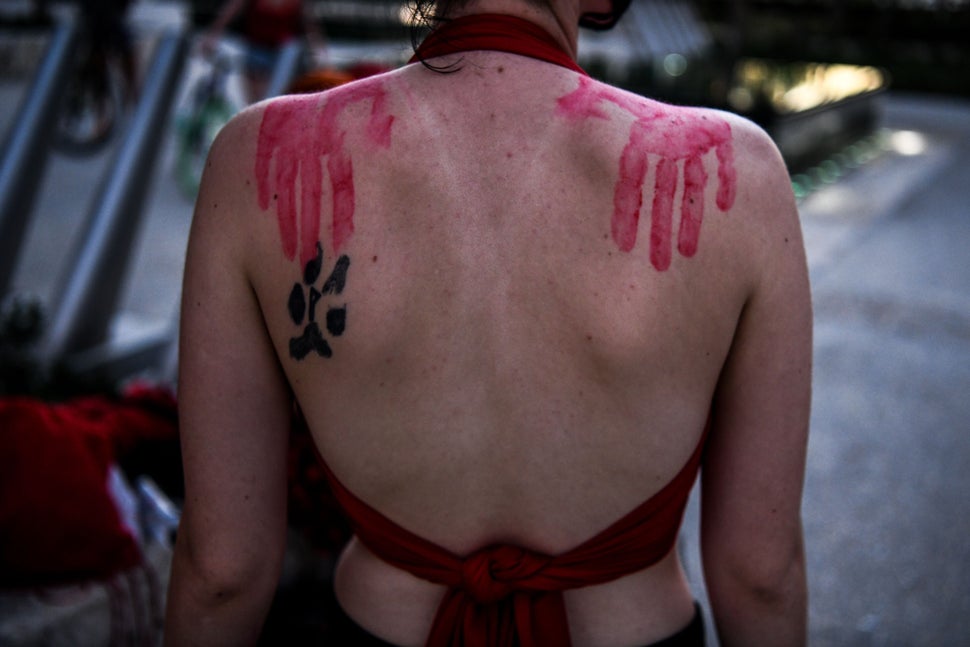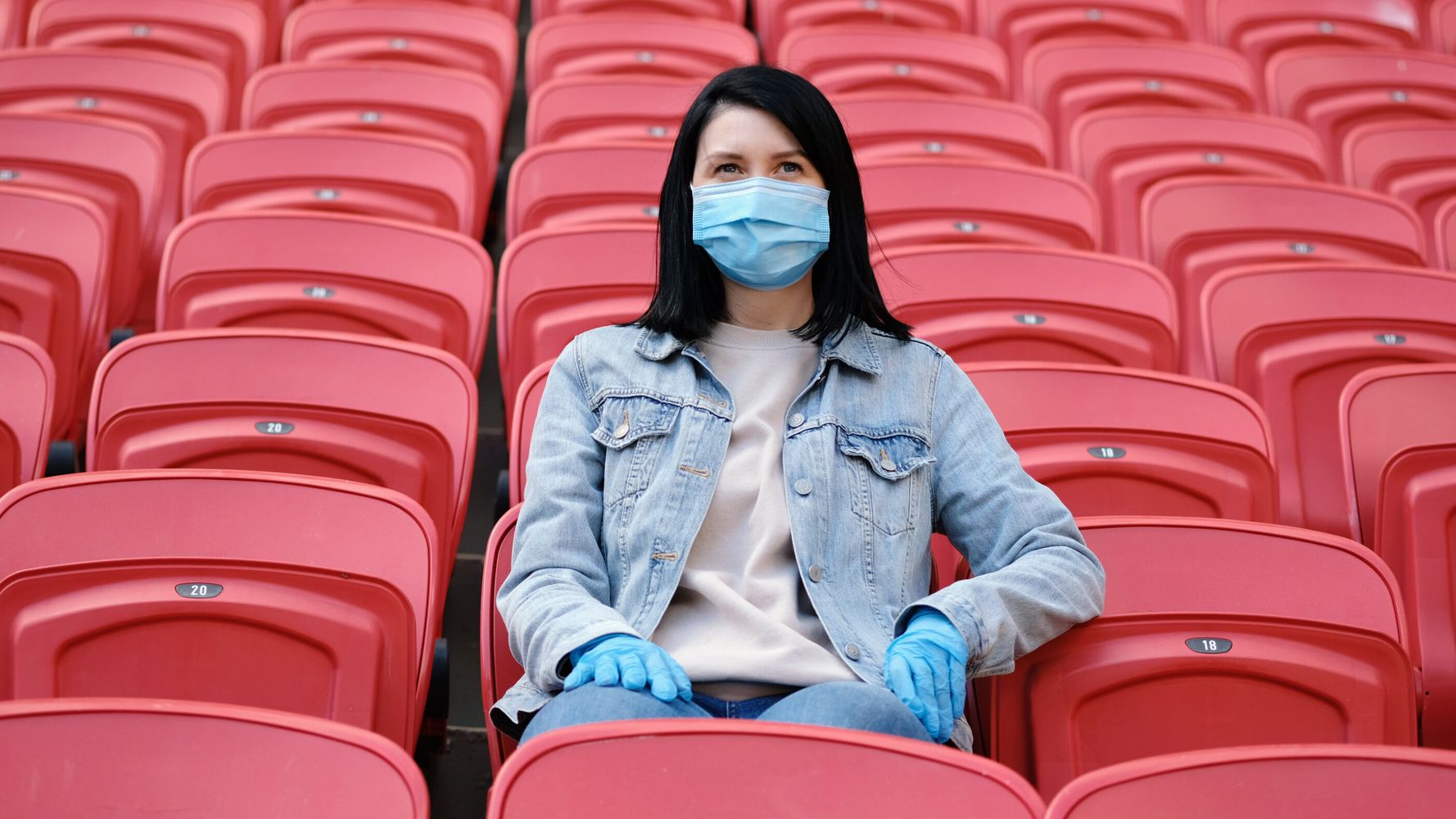Whipping up panic about sex trafficking at the Super Bowl has become as durable a tradition as nachos, Budweiser ads and a milquetoast halftime show.
Every year, anti-trafficking organizations and law enforcement officials pitch news outlets the same story: The annual event causes a huge influx of sports fans to the host city, which invites a huge influx in sex workers, which results in a huge spike in human trafficking.
These claims are inevitably accompanied by large-scale publicity campaigns and police crackdowns. This year, in preparation for Super Bowl LV, Tampa authorities have spent the last month putting up billboards (“Don’t buy it, Tampa Bay”), ticketing strip clubs and organizing prostitution stings.
“We know from past experience with major sporting events there will be some who travel for the exclusive purpose of taking advantage of women and children,” Hillsborough County Sheriff Chad Chronister said after a Jan. 11 vice roundup that netted 71 arrests.
This narrative sounds convincing, a reasonable response to a widespread, severe and growing societal scourge.
There’s just one problem: It’s a lie.
A Solution In Search Of A Problem
There has never been any evidence that major sporting events are associated with a rise in human trafficking. Studies of Germany and South Africa failed to find any link between the World Cup and an increase in trafficking. An analysis of the 2010 Winter Olympics in Vancouver found that the market for sex work actually shrank during the sporting event — mostly due to increased police presence and extra traffic.
The Super Bowl is no different. Despite waves of ominous warnings every year, no city has demonstrated a rise in human trafficking before or after the big game. Arrest records following the 2017 Super Bowl in Houston turned up low-level busts for prostitution and driving under the influence. An FBI raid in Atlanta timed to coincide with the 2019 Super Bowl turned out to be a standard-issue vice roundup of sex workers.
This isn’t even the first time the myth has appeared in Tampa. Last time the city hosted the Super Bowl in 2009, police spokesperson Andrea Davis told reporters afterward that the department “didn’t see a huge influx in prostitutes coming into Tampa. The arrests were not a lot higher. They were almost the same.”
“There’s not any more trafficking; there are just more arrests,” said Blair Hopkins, the deputy director of the Sex Workers Outreach Project Behind Bars, a nonprofit organization that provides assistance to currently and formerly incarcerated sex workers. For the past month, Hopkins and her colleagues have been bailing out sex workers caught up in pre-Super Bowl stings. The organization has also released a list of policy proposals for safeguarding sex workers and is trying to put the sports-and-trafficking myth to rest.
“None of the women we’re working with even knew it was the Super Bowl this weekend,” she said.

The Super Bowl Myth Doesn’t Make Sense
Beyond the numerous academic dissections and journalistic investigations, the Super Bowl trafficking narrative simply runs counter to any reasonable understanding of the market for sex work.
“As soon as you start thinking about logistics, it totally falls apart,” Hopkins said. “Why would you take the risk of cramming a bunch of trafficked women into a van and taking them to Tampa, where the hotels are extortionate and there are cops everywhere? And for what? To stroll the streets?”
Sex work, like most other professions in America, is highly stratified. The upper echelons of the sector — the part most likely to appeal to wealthy luxury-box football fans — features the women least likely to be trafficked. High-income sex workers mostly see regulars and generally spend hours in the company of their clients. Rather than working for managers (the term “pimp” is racialized and isn’t generally used by sex workers), they often have assistants to help them screen potential clients for safety. They mostly work indoors and have little need for physical protection.
Meanwhile, the low end of the market — street-based sex work — is characterized by low pay, long hours and significant risk of arrest and bodily harm. Nearly all of the women working in red-light districts are poor; the vast majority work independently. While sexual exploitation is a real risk, it doesn’t come from international criminal networks. It comes from low income, lack of access to housing, drug addiction and domestic abuse.
As well as denying the realities of sex work, the sports-trafficking myth also contradicts the realities of the Super Bowl. Despite the high-roller stereotype, Super Bowl attendees are only slightly wealthier than the national average. Most male visitors travel to the game with their families. Host cities typically see a slight uptick in online sex advertisements over Super Bowl weekend, but it’s far from the weeks-long avalanche of demand depicted in media stories.
Trafficking Myths Aren’t Helping
Even if the link between the Super Bowl and human trafficking was real, it’s not clear that the publicity campaigns and law enforcement crackdowns are helping sex workers vulnerable to exploitation.
“If you want to change your life or transition into working a 9-to-5 job, how are you going to do that with a prostitution arrest on your record?” said Ashunte Coleman, a former sex worker and the founder of Ladies Intervention Project for Success Tampa, a nonprofit that provides supplies to trans sex workers.
What my girls need is housing, jobs, affirming medical care and education. What they’re getting are a bunch of cops trying to push them off the streets and out of sight.
Ashunte Coleman, founder of Ladies Intervention Project for Success Tampa
Coleman noted that the most vulnerable sex workers are trans women of color, who face the most severe risk of violence from clients and harassment from police. Encouraging the population to associate sex work with human trafficking only subjects them to more scrutiny — while doing nothing to address the reasons they’re engaged in street-based sex work in the first place.
“What my girls need is housing, jobs, affirming medical care and education,” Coleman said. “What they’re getting are a bunch of cops trying to push them off the streets and out of sight.”
Few anti-trafficking efforts associated with the Super Bowl provide meaningful assistance to low-income sex workers. In 2018, Minneapolis announced that it would provide sex trafficking victims with housing in advance of the big game. The offer, however, lasted only 10 days. The morning after the Super Bowl, the women were sent back to the streets.
Sports-related anti-trafficking efforts also have a blind spot for labor trafficking. The vast majority of victims in the United States are engaged in forced labor. Most are recruited from overseas with false promises of high wages and fair working conditions, then they’re exploited by their employers. Victims are typically poor and undocumented and work in low-paid sectors like construction, food preparation and hotel cleaning — exactly the sectors that spike in connection with the Super Bowl. Yet no host city has ever announced a crackdown on exploitative employers in the months before the game.
The Myth Won’t Die, But It’s Changing
Recent years have seen a shift in media coverage around the Super Bowl and anti-trafficking efforts. Rather than claiming the game causes a spike in demand, advocates describe the event as illustrating a constant, lingering problem.
“It happens year round,” Kimberly Overman, the chair of the Hillsborough County Human Trafficking Task Force, told the Tampa Bay Times earlier this week. Local news reports now feature disclaimers that although the Super Bowl doesn’t in fact correspond with a rise in trafficking, the problem is everywhere and could happen to anyone.
This is not a sign of progress. Casting human trafficking as a major year-round problem simply trades one myth for another. Numerous academic studies have found that sex trafficking is a relatively limited phenomenon in the United States. Federal authorities initiate fewer than 600 investigations per year; the entire state of Florida convicted just eight people of sex trafficking in 2019.
As this message has begun to permeate the population, police have also started to move away from the Super Bowl-spikes-sex-trafficking story. Tampa, like dozens of other cities across the United States, is shifting to a “Nordic” model of sex work regulation, in which police target customers rather than sellers. The strategy is designed to keep sex workers out of the criminal justice system while reducing the aggregate demand for their services.

While this does represent an improvement over the previous strategy of nonstop prostitution stings, Hopkins noted that trading sex worker arrests for customer arrests creates its own problems, driving risk-averse customers out of the marketplace and leaving sex workers with fewer and sketchier options.
“When it gets riskier to patronize sex workers, you’re going to get a different kind of client,” Hopkins said. “It removes the good ones and leaves more of the bad ones.”
Nor does the “end demand” strategy protect sex workers from arrest. Rather than picking them up for prostitution, police officers often book sex workers for loitering, drug possession or other crimes of poverty. And, most important, it does nothing to change the fundamentally antagonistic relationship between law enforcement and sex work.
“Women still can’t go to the police about a predator targeting them,” Hopkins said. The criminalization of paid sex means workers can’t report assaults, thefts or other abuses without risking arrest. Nor does it include any accountability mechanisms to prevent police from carrying out abuses ― or, as has happened in the run-up to the Super Bowl, arresting women for prostitution anyway.
“It’s politically advantageous to paint these women as victims,” she said, “but it doesn’t address any of the risks they actually face.”
Calling all HuffPost superfans!
Sign up for membership to become a founding member and help shape HuffPost’s next chapter
This article is auto-generated by Algorithm Source: www.huffpost.com


